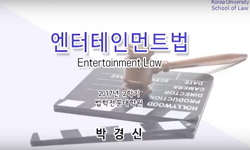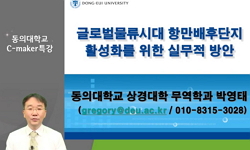Mixed-use commercial facilities aim to profit from rents through long-term operation rather than terminating their business simultaneously with completed building sales unlike general shopping malls. For this reason, considering how to activate such f...
http://chineseinput.net/에서 pinyin(병음)방식으로 중국어를 변환할 수 있습니다.
변환된 중국어를 복사하여 사용하시면 됩니다.
- 中文 을 입력하시려면 zhongwen을 입력하시고 space를누르시면됩니다.
- 北京 을 입력하시려면 beijing을 입력하시고 space를 누르시면 됩니다.

복합상업시설 활성화의 구조형성에 관한 연구 - 판매자의 관점에서 - = A study on structure formation in the activated mixed-use commercial facility - on the seller`s perspective -
한글로보기https://www.riss.kr/link?id=A102555137
- 저자
- 발행기관
- 학술지명
- 권호사항
-
발행연도
2016
-
작성언어
-
-
주제어
mixed-use commercial facility ; tenants ; activation ; importance ; structural equation ; modeling ; entertainment ; and attraction factors ; 복합상업시설 ; 테넌트 ; 활성화 ; 중요도 ; 구조방정식 ; 엔터테인먼트 ; 집객요인
-
KDC
300
-
등재정보
KCI등재
-
자료형태
학술저널
-
수록면
69-82(14쪽)
- DOI식별코드
- 제공처
- 소장기관
-
0
상세조회 -
0
다운로드
부가정보
다국어 초록 (Multilingual Abstract)
Mixed-use commercial facilities aim to profit from rents through long-term operation rather than terminating their business simultaneously with completed building sales unlike general shopping malls. For this reason, considering how to activate such facilities from seller`s perspective is very important in the long run. Accordingly, this study aims to identify the structural formation of activated mixed-use commercial facilities from seller`s perspective by drawing the causal relationship between mixed-use commercial facilities and their activation and relevant important factors among sellers unlike previous studies. At the same time, it aims to reveal how there is a difference in user`s perspective. Next, it analyzes the structural formation of activated districts related to mixed-use commercial facilities whose hinterlands are distinctly different, from seller`s perspective and draw relevant policy implications. As a result of empirical analysis, first, five hypotheses set up from the structure formation path analysis of the entire models were all adopted, and attraction, physical, entertainment, and accessibility factors all had a direct impact on the activation of mixed-use commercial facilities and simultaneously formed a virtuous cycle that led to seller`s behavior intention. Second, as a result of region-specific comparison, in Time Square, attraction factor related to sales and physical factor only formed a causal relationship, whereas in COEX Mall, all factors did. This result seems to reflect the regional characteristics of two targets because Time Square and COEX Mall were based on mixed-use commercial facilities with different regional characteristics: for example COEX Mall was located at the top 3 areas in Seoul Urban Master Plan, whereas Time Square was surrounded by the shopping district of Yeongdeungpo, a secondary center of city and residential area. In conclusion, it was found that sellers thought the fusion and convergence of mixed-use commercial facilities more important than simply sales and that the factors that reflected the regional characteristics well contributed to activating the mixed-use commercial facilities.
동일학술지(권/호) 다른 논문
-
- 한국감정평가학회
- 박종민 ( Park Jong Min )
- 2016
- KCI등재
-
- 한국감정평가학회
- 홍원철 ( Hong Won Chul )
- 2016
- KCI등재
-
주택점유형태를 고려한 소비자심리가 아파트거래량에 미치는 설명량 분석
- 한국감정평가학회
- 최윤영 ( Choi Youn Young )
- 2016
- KCI등재
-
철도역 상권 임대료와 매출액 결정요인에 관한 연구 : 수도권 전철역을 중심으로
- 한국감정평가학회
- 김용래 ( Kim Yong Rae )
- 2016
- KCI등재




 KCI
KCI KISS
KISS







